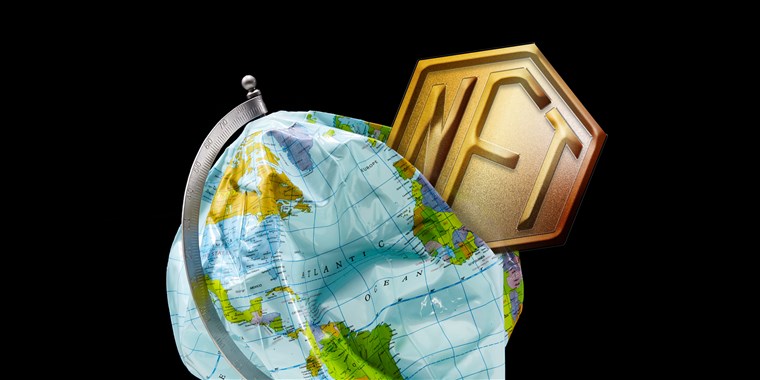
Source: Market Realist
NFTs are really being quite the emotional rollercoaster of the year. You know, besides that small unimportant global pandemic going on… But now in all seriousness, this year we have seen NFTs skyrocket as the fastest growing market ever, revolutionize the world of art, become the new age theft, mysteriously disappear, and begin to crumble as prices plummet.
What’s next? Will they evolve into higher beings, communicate among them, upgrade and create new operating systems so that they no longer are bound to physical servers, and then leave humanity behind as they migrate to the place where “everything else is”?
Just in case you were living under a rock in 2013, that was a reference to the technological dystopian utopia cinematic masterpiece, Her.

Source: Best Practice Biz
Why are NFTs bad for the environment?
Apparently, the electricity required to support a single Ethereum transaction (Ethereum is the cryptocurrency used for NFTs) ascends up to 70.32kWh, or for those of us who were never really all that into science, the amount of electricity that could power a U.S. household for 2.5 days. Now that may not sound like much, but that is simply ONE transaction. Add it all up, and the NFT energy consumption annually is that of a small country. Put like this, it is impossible to deny the environmental impact of blockchain.

Source: MSNBC
Lately, this exorbitant NFT energy consumption resulting of mining (mining is the name of the process that uses advanced cryptography to check whether transactions are valid, it ensures the system is safe, and keeps a record of it all transactions) has been turning quite a few heads, and not in the direction NFT enthusiasts would like. The criticism from environmentalists is starting to grow stern, strong, and loud. Could the NFT carbon footprint even be getting in the way of the wonder market’s growth?
Is the NFT environmental impact hindering its growth as a market?
ArtStation, for example, announced its plan to launch a new NFT platform, and promptly received so many complaints, they decided to apologize and postpone the project until they can find a solution that is equitable and ecologically sound.

Source: Time Magazine
However, this might not mean the end of NFTs just yet. Are NFTs bad for the environment? Sure, but that doesn’t mean that they have to be. We just need to lower the NFT energy consumption as well as the NFT carbon footprint. But how? How on earth can we reduce the NFT environmental impact?
Ways to reduce the NFT environmental impact
First and foremost, ensure that the blockchain is powered by renewable sources, which is really quite a doable thing. Crypto miners gravitate to where energy production is cheapest, and in doing so, oftentimes end up using non-renewable energy. BUT, countries like Iceland and Norway, where most, if not all, of the electricity comes from renewable sources, do actually have rather cheap geothermal and hydroelectric energy. The low temperatures are an added bonus to reduce costs as computer servers can be naturally cooled down. If we managed to do just this, we would already be massively reducing the NFT environmental impact.
The second step towards a sustainable NFT world is to switch from Proof-of-Work (PoW), which is the algorithm used by most blockchains, including Etherium, to Proof-of-Stake (PoS). You’ll be asking yourself, what the hell does this mean? PoW and PoS are both systems for validating blockchain transactions. PoW’s is an energy-intensive mining operation, while PoS does not actually consume any electricity because the ledger, or the transaction, is secured through users “staking” their own cryptocurrency tokens.
This action is key in controlling the NFT carbon footprint.

Source: Widewalls
We must reduce the NFT environmental impact
SO, the bottom line is, in this day and age we simply can’t afford as a society, to not take into account the environmental costs of our actions. We don’t know about you, but we miss spring and autumn. Climate change is no joke, it’s not going anywhere, and it’s not looking like NFTs are going anywhere either. So we must ensure that the NFT consumption levels go down.
If the market keeps growing at such an extravagant speed, then NFTs need to resettle into a carbon-neutral virtual lifestyle ASAP. We know that with these sorts of issues, it’s not a matter of if anymore, it’s a matter of when. So for god’s sake, what are we waiting for?













